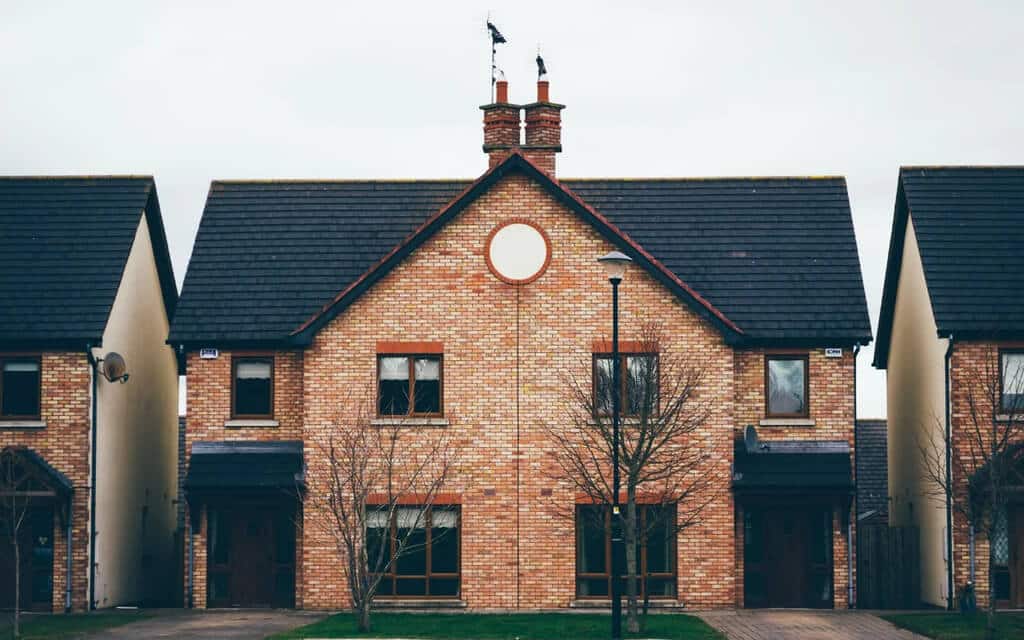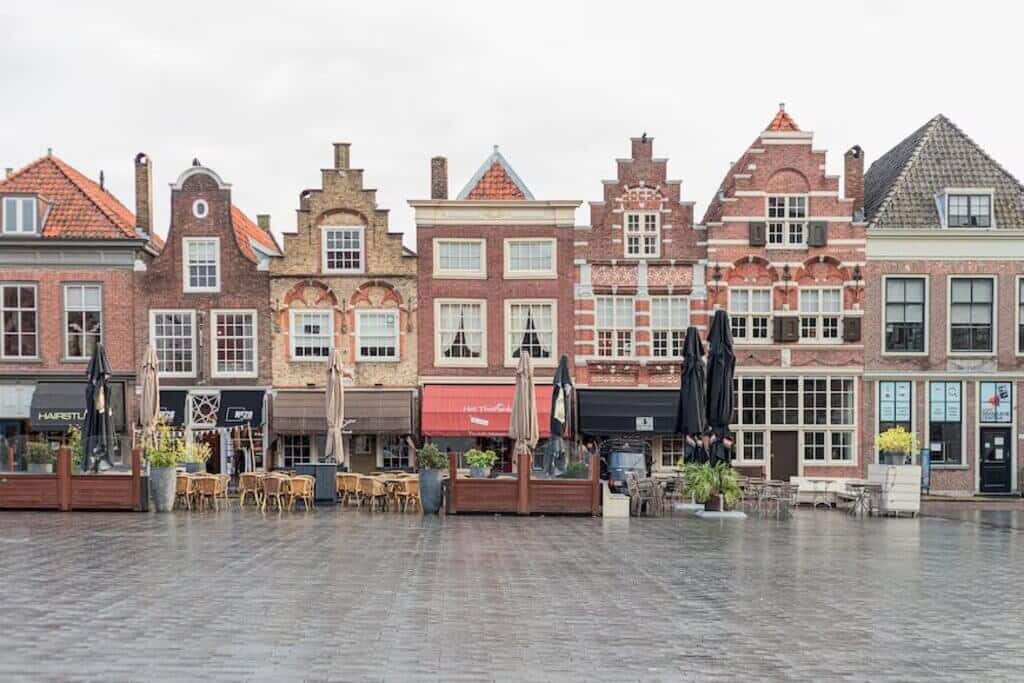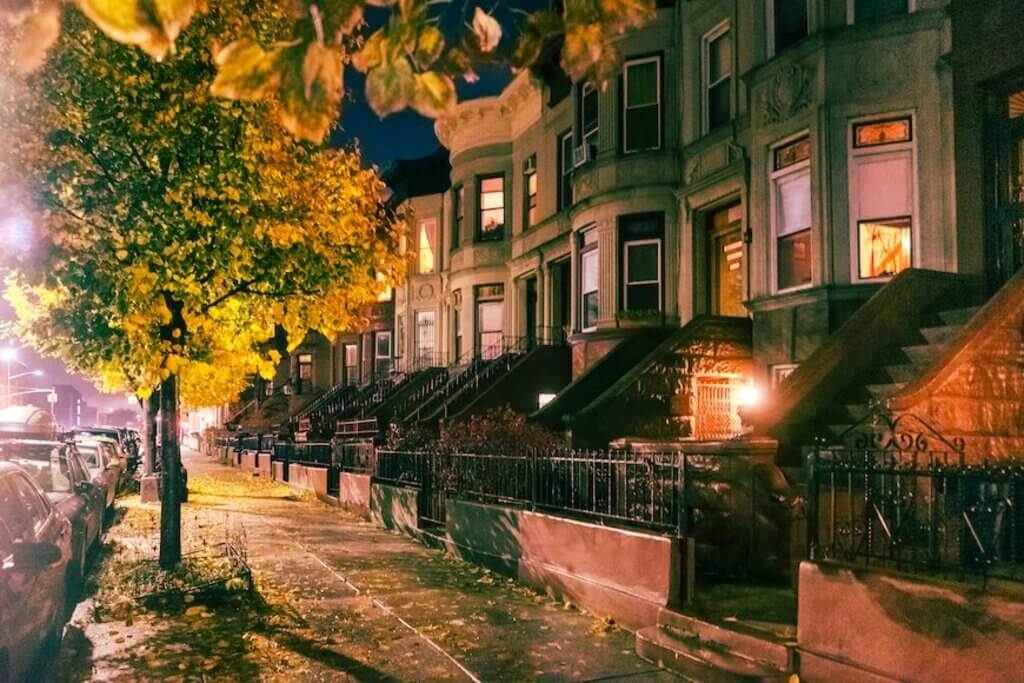Rowhouse is a type of residential building that is characterized by a series of connected houses sharing a sidewall. It is significant to note that rowhouses can be found in a variety of contexts, including urban, suburban, and even rural settings. However, they are commonly thought of as being a feature of urban life.
In the 19th century, rowhouses were first built as dwellings for working-class families in the United States. Today, rowhouses are found in a variety of styles and are available at a range of prices. A rowhouse is generally much narrower than other types of residential buildings. Due to their narrow depths, rowhouses can be constructed on relatively small lots.
A Sense of Community Takeaway: Reasons Why Rowhouses Remain a Popular Housing Choice
Despite their popularity, there still needs to be more clarity about what is a rowhouse and how they differ from other housing types. Read on to learn everything you need to know about rowhouses, including their history, architecture, and benefits!
What Is a Rowhouse?

Rowhouses often have a unique charm, as they are typically older homes with more character than newer, cookie-cutter homes. They often have interesting architecture and may be located in historic districts. They are also known as shotgun houses because they were built with two or more stories and were shaped like a shotgun.
A row house is a type of residential structure in which row houses line both sides of a street and are connected by an open space in the center. The word “row” in this context does not refer to an arrangement of people or things but instead refers to the arrangement of buildings that form one side of the street.
A rowhouse is a multi-family dwelling usually consisting of three or more units. The name comes from the fact that these structures look like houses, but they are tall buildings with multiple floors. You can use rooftops for additional living space; sometimes, decks are attached to the buildings for outdoor living. If you’re looking for a more unique and affordable option for living in an urban area, a rowhouse may be the perfect option for you.
History of a Rowhouse: From Ancient Times to Today

The history of rowhouses is a fascinating story with roots in the 19th century and a long and evolving life. A rowhouse is a building with three to five stories, usually one story above the other. The term comes from the Dutch word huis rood, which means red house. In the 17th century, wealthy people built these homes to show off their wealth and status, but they are also known as mansions because of their size. So they built these huge houses that took up nearly an entire city block!
Architect William Thornton built the first rowhouses in Washington, DC, in 1812. They were small, one-story homes with only one room on each floor. These houses were called “rowhouses” because they were arranged in rows along streets, like houses in a lane or a row of trees. These homes were bays where you could stand at the front door and look out over your neighbors’ rooftops.
Eventually, they spread across Britain and America, but they never became popular in Europe until after World War I, when England suffered an economic depression. Architects like George Gilbert Scott designed row houses for this new clientele with beautiful views of the city below them.
4 Types of Rowhouses
There are many different types of rowhouses, from the traditional townhouse to the more modern row home. A rowhouse is a type of housing where a group of houses is connected in a row.
Rowhouses are usually found in urban areas and are a popular type of housing for many people. Each type has its unique features and benefits, so it’s important to choose the right one for your needs.
1. Townhouses: Private Types of Rowhouses

The most common type of rowhouse is a townhouse. Townhouses are generally rectangular, with private front entrances on each level. These homes are typically three or four stories tall and are built close together, with common walls between each unit. Rows of windows line each floor, and a second-floor overhang may be above the first-floor porch. Townhouses are a popular choice for urban living, as they offer a lot of square footage in a small footprint. They also tend to be more affordable than other types of homes.
2. Tenements: Inexpensive Types of Rowhouses

Tenements are the most inexpensive type of rowhouse and are typically found in urban areas with high crime rates and poverty levels.
3. Row Homes: Erratic Types of Rowhouses

In some towns, you’ll find row homes with rear yards — similar to townhouses but with narrow, irregular facades instead of regular ones. But they usually have two stories. These are usually found in older neighborhoods where lots are smaller than in newer areas or where developers don’t want to build large buildings that would block out light from neighboring properties.
4. Brownstones: Luxurious Types of Rowhouses

Brownstones are the most luxurious type of rowhouse and are typically found in affluent neighborhoods.
Key Characteristics of Rowhouses

Rowhouses have a distinct look and feel that sets them apart from other types of homes. They are typically built on small lots, which means they don’t take up much space. However, they can be very expensive to buy or build because they usually require more architectural features than other home designs.
A rowhouse is a type of urban residential building consisting of two or more connected houses, generally on a single lot, sharing a wall between their front yards and their rear yards.
In general, the characteristics of a rowhouse include the following:
- Two or more attached units (houses) sharing a common wall, which may be either on the same lot at the same address or spread across two or more lots at different addresses.
- A wall separates the front and back yards of the houses. The backyards are reserved for the rear house(s) and may extend further, but not as far as the adjacent lot.
- A set of entrances at the front of the houses, either for vehicular access or pedestrian access. In some cases, there are multiple entrances. In a neighborhood with multiple rows, there may be no single entrance, but each house has its own entrance.
10 Interesting Facts About Rowhouses

1. Rowhouses Are Cooler Than Normal Houses
Because a rowhouse is built around a courtyard (or at least one shared by all the neighbors), they tend to be cooler than normal homes because they don’t trap heat inside like a typical house. Also, they tend to have bigger windows that let in more natural light and make them feel brighter.
2. Rowhouses Are More Laid Back
Because they’re not attached and don’t have any yards or garages, a rowhouse is usually less busy than other houses — which makes them easier to live in and gives you more space to enjoy your life outside work or school. You can also put up curtains if you want privacy (but remember that those won’t block out those pesky street noises).
3. Rowhouses Are More Convenient Than Multi-Family Buildings
A rowhouse is easier to maintain and more accessible. Since most rowhouses have no basements, it is much easier to climb up and down stairs. That’s great because nothing is worse than climbing up and down a hill all day.
4. Rowhouses Are Not Multi-Family Mix
A rowhouse is not multi-family mixed with houses — they are all houses. That means they are less likely to have a lot of commotion from many people coming and going at all hours.
5. Building in the Upper Middle Eastern Context
A rowhouse is a part of the Middle Eastern landscape. They are a type of building that is more common in Middle Eastern cultures.
6. Rowhouses Are Incredibly Compact
Rowhouses are extremely dense. They are small spaces that are packed together closely. That means you get a lot of value for your money, but you also have to consider how to stay safe regarding storage and safety.
You’re still more likely to encounter neighbors and other people in a rowhouse than in a typical house. But if your neighborhood is safe, your chances of encountering your neighbors are slim. That’s cool because you can be alone, at peace, and close to people.
7. Rowhouses Have a Great Climate
A rowhouse tends to be more climate-controlled than normal houses, meaning they are much more comfortable. There is more ventilation because you don’t have to worry about heating and cooling as much. In turn, you can create a space that is conducive to your needs.
8. Rowhouses Have Much Larger Walls
Rowhouses tend to have much bigger walled areas, meaning they are much larger than normal houses.
A rowhouse has this great little courtyard or space that is shared by all of the buildings. Most houses don’t have the size of a courtyard that a rowhouse does. In short, a rowhouse has much larger living and entertaining spaces.
9. Rowhouses Are Incredible for Storage
A rowhouse is a wonderful storage place. That’s because the walls are tall, and there are usually many vertical spaces. So when you need to store something, you can fit it anywhere.
10. Rowhouses Are Great for the Health of the Individual
A rowhouse has much better air quality than typical houses. They are much more ventilated and air-conditioned. This means they are more conducive to a healthy environment for the occupants. You can also create a personal space isolated from the hustle and bustle of the outside world, giving you more freedom.
Are You Ready to Buy a Rowhouse for Yourself?

To summarize the article, you should be aware of what is a rowhouse. Rowhouses are condominiums built in a row, with each one having its own door and a common wall, thus the name. With their unique charm and comfortable layout, rowhouses make for the perfect place to call home.
Buying a rowhouse is a wise option for people who want to move into a pleasant neighborhood but don’t want to spend a lot of money. There are many worthwhile benefits to buying and living in a rowhouse. We hope this blog provided you with a comprehensive guide to everything you need to know about these properties.

FAQs
A rowhouse is a type of residential building that is typically characterized by a series of attached homes, each with its own entrance, that share common walls.
There are several benefits to living in a rowhouse, such as having a smaller carbon footprint than living in a detached house, being closer to neighbors for a sense of community, and saving money on heating and cooling costs since rowhouses are generally more energy-efficient.
They are different from regular homes because:
A rowhouse is an attached home that shares a wall with the home next to it. Rowhouses are usually narrower and have less outdoor space.
They are cheaper. Although they are a bit smaller than bigger homes, they are still as comfortable, and they tend to be a bit cheaper. This is because they are easier to build, and that makes them a good option for first-time homeowners.
There is something special about them since they are a row of houses built closely together. The feel of a house in a row is completely different: the sound, the sight, and the smell are different.
A rowhouse is a dwelling that is attached to other dwellings on either side, while a townhouse is a dwelling that is attached to other dwellings on only one side.
A rowhouse is typically attached side-by-side, while apartments are usually built in a taller, more centralized structure. Additionally, rowhouses have more outdoor space, such as a backyard or patio, while apartments have a balcony.
Discover more:-

